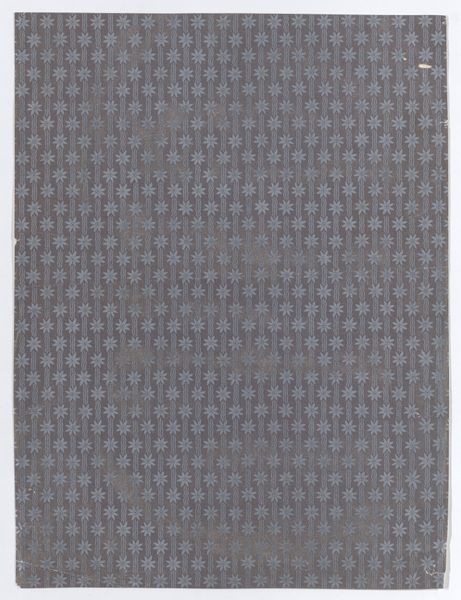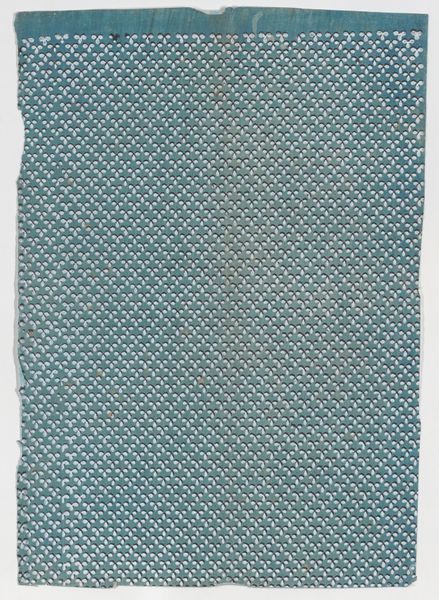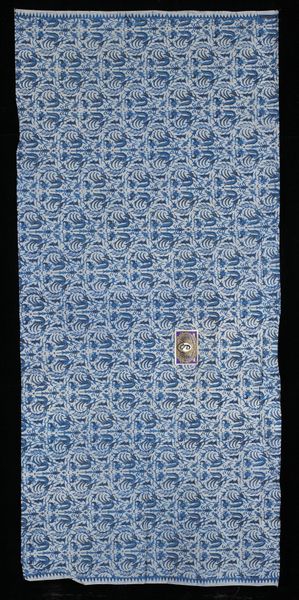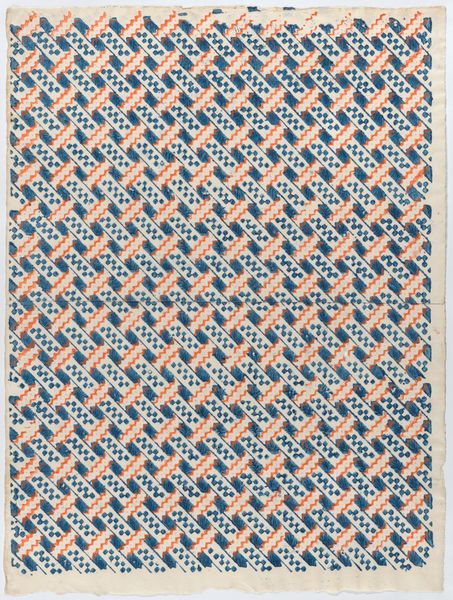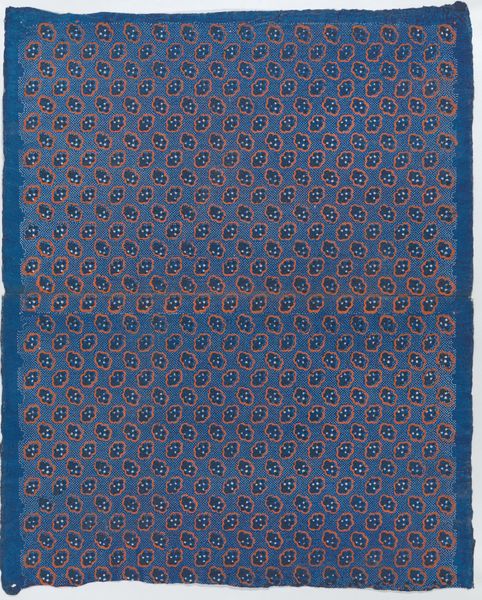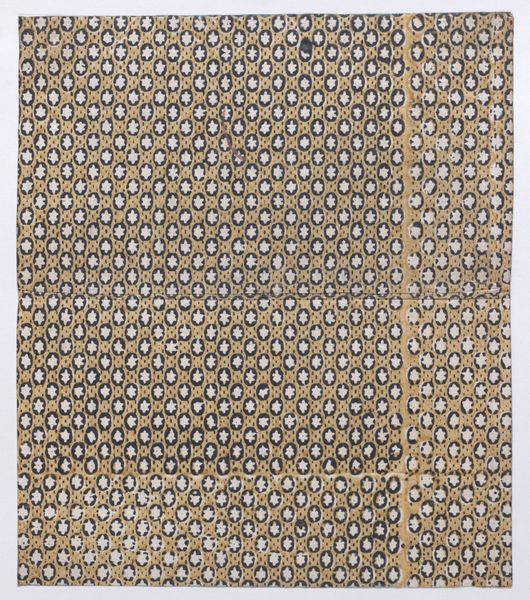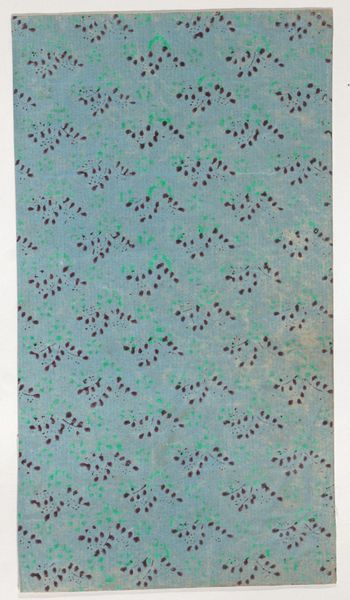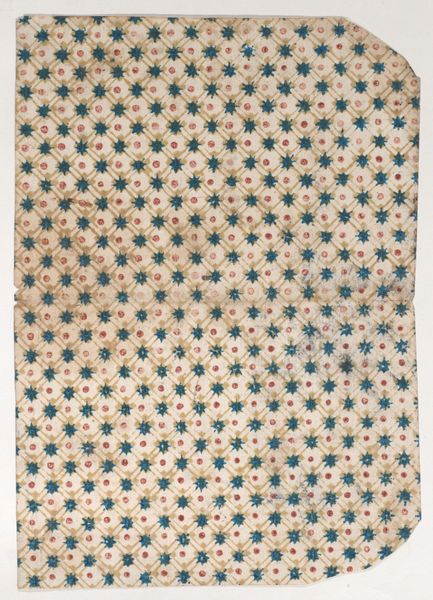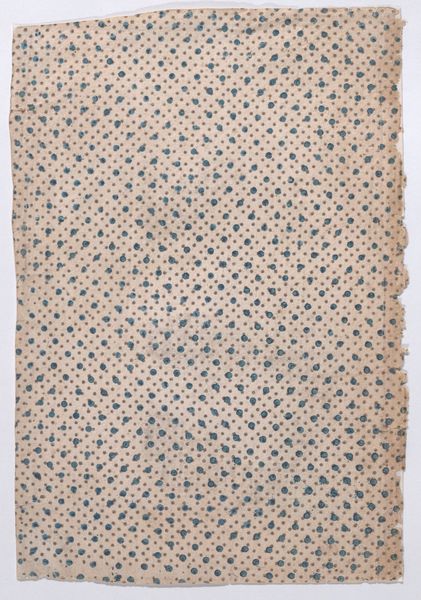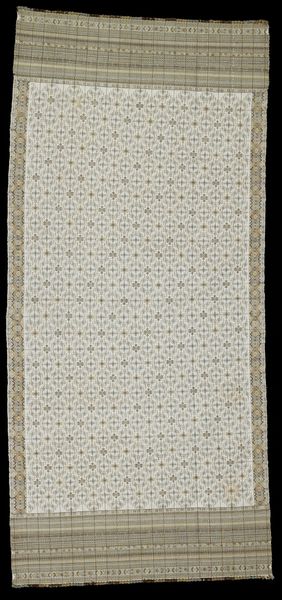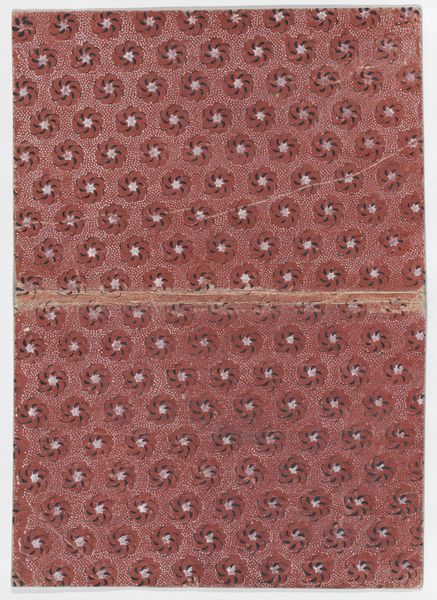
Sheet with overall black and white floral pattern 1775 - 1875
0:00
0:00
drawing, print
#
pattern heavy
#
drawing
# print
#
fashion and textile design
#
repetitive shape and pattern
#
repetition of pattern
#
regular pattern
#
pattern repetition
#
textile design
#
imprinted textile
#
layered pattern
#
funky pattern
Dimensions: Sheet: 14 9/16 × 19 3/16 in. (37 × 48.8 cm)
Copyright: Public Domain
Curator: My eyes are immediately drawn to the regular yet relentless pattern. It's simultaneously soothing and strangely unnerving. Editor: Indeed. This is an example of an anonymous work from between 1775 and 1875 titled, "Sheet with overall black and white floral pattern," presently residing here at the Metropolitan Museum. It's executed as a print, very likely intended for textile design. Curator: Textile design… yes, that makes sense. It feels like something that wants to be draped, worn, repeated on a grander scale. It reminds me of early block-printed calicoes. What strikes me, though, is how that enforced repetition speaks to a desire for order, or perhaps control, in a world constantly threatening to devolve into chaos. Editor: The period in question was marked by revolutions, industrial upheavals, and burgeoning colonialism, so the tension you're picking up resonates profoundly. There was a mania for collecting specimens of the natural world. Pattern books allowed people from afar to experience things without the social friction involved in seeing something firsthand, Curator: Absolutely. The individual flower motif itself is quite simple, almost childlike in its directness. But combined with this grid-like structure, the image attains a potent symbolic weight. We often imbue floral motifs with concepts of renewal, fertility, even paradise. Here, though, there's an insistent quality to the display. Does the very act of duplication somehow diminish their meaning? Is something lost each time the form repeats? Editor: Well, I would say the act of repetition doesn't diminish so much as translate it. Each reiteration creates a collective statement of aspiration for the rising bourgeoisie. These designs allowed individuals access to symbolic worlds previously only seen in upper classes. Curator: So you read the pattern less as a commentary on a collective psyche and more on shifting demographics? I still maintain that it's fascinating how design could have an impact as design began to find its power through industry. Editor: Design is never absent of these shifts in perspective! I found it remarkable that even seemingly simple floral designs have complicated backgrounds rooted in history. Curator: It really gives one food for thought as to how something made long ago affects how we look at designs today!
Comments
No comments
Be the first to comment and join the conversation on the ultimate creative platform.

